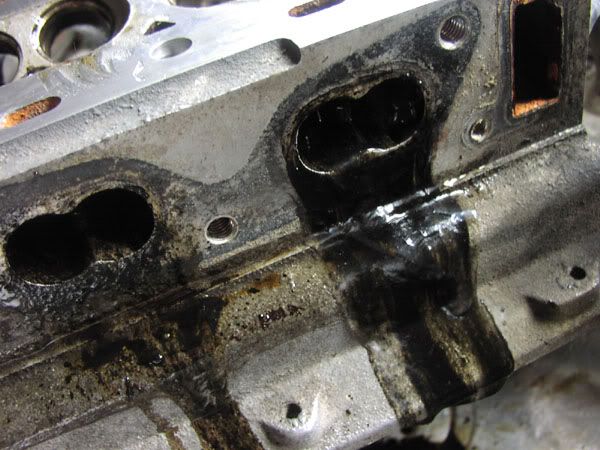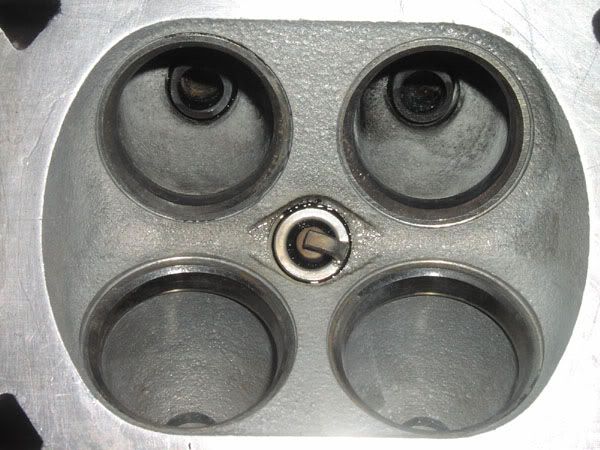Rich, I'm no engine builder..................... My comments within your post below are items I read in the McKenzie Cylinder Head article and or viewed in the video.
David, I know where your coming from and don't disagree and respect where you are coming from. I am also trying to stay away from the quantitative aspect of this rules discussion for the most part as I will leave that to those with the most at stake.
In the Mckenzie article the top right photo shows a head that appears to me to have been full bead blasted in preparation for the valve machining operation. My concern is that it is a very common practice to use bead blasting to clean carbon from aluminum and most machine shop customers loose control over their parts once they are handed over for processing. < Understand and kind of how we got where we are today.
I perfectly understand that the SCCA rules are trying to convey that there is to be no actions taken that could be used to result in enhanced performance from the process. They even say no chemical process should be used. Does that mean that ultrasonic cleaning (which uses a chemical solution) automatically renders a head illegal? Ultra sonic cleaning could be used without a chemical. Maybe the first head cleaning would be a water/soap hot tank soak, power rinse and non-chemical ultra sonic cleaning the remaining chamber carbon. We have to be careful to not overly wall ourselves in with rules that cannot be enforced < Agree or that overly restrict what goes on using standard machine shop operations. < Understand, standard machine shop operations is one cause that kind of how we got where we are today. Yes, we should not allow people to use these processes to enhance the flow performance but if someone wants to bead blast their head's cambers and gasket surface strictly for purposes of cleaning the parts I see no reason to consider that head illegal. Even if folks used masked the head completly other than the chambers and gasket surface, the process would be out of control day one.
I think we got into this mess primarily because of the "absolute" type of rule wording relative to not removing "any" flash from the plunge cut. This absolute instead introduced vagueness. It is not in the nature of any good machinist to leave flash hanging and as a result what probably started as simple light flash clean up resulted in the rules "creep" we now have as SCCA TECH never paid close attention to this area and builders never bothered to seek rule relief since things were "getting by". In place, there should be a standard machining/parting line clean up tolerance of some specified minimum/maximum value (as the case may be) that (unless otherwise specified in the rules) is allowed for all machining operations.
While doing minimal research an article surfaced specifying a paint stripper that removes carbon from the exhaust runner and from the combustion chamber. Would need to experiement with paint stripper type methanol/labeled methanol-dichoride to observe if when soaking the chamber only (valves in head) to loosen/remove carbon if a smooth transmission occurs at the sharp edge (sharp edge by rule .5.) where the valve relief un-shroud cut meets the combustion chamber. If sharp edge by rule .5. is still there, head is legal. It may take hundreds of hours soaking to remove the sharp edge. Seems control would be less of an issue that bead blasting. Hey, the sky is blue when we focus. Some times trial and error accomplishes things.

After a rinse it looks like this.




 Sign In
Sign In Create Account
Create Account









 Back to top
Back to top Report
Report














